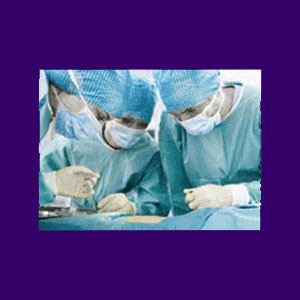
Coccyx surgery is usually performed in 2 distinct versions of operative interventions. The type of surgery required depends on case-specific factors of the pain complaint and its underlying causation.
Open reduction of a serious fracture where bone segments have migrated from their normal anatomical position is the first option for tailbone surgery. This situation is rare, but the procedure is sometimes used for patients who have endured significant traumatic injury to the tailbone. The more commonly performed tailbone operation is called a coccygectomy. This procedure is used to remove the entire tailbone in the hopes of ending a chronic coccyx pain condition.
This dissertation provides a look at both of these procedural options for tailbone surgery.
Coccyx Surgery Indications
The coccyx is a common site for both injury and psychogenic back pain to occur.
Injuries can be the result of trauma or childbirth. Physical injuries usually heal on their own, but sometimes do cause long-term pain. Surgical treatment of an injury is extremely rare and most coccygectomies are really not necessary. Most are simply used as methods of (hopefully) permanently ending pain.
Psychosomatic pain can start for no apparent reason, but is more commonly commenced after an initial physical injury to the tailbone. The subconscious mind knows that a site of previous injury will make a more convincing location for the pain to occur. Remember that psychologically-induced pain is enacted as a distractive mechanism. The more convincing it seems, the more effective the distraction will be. Unfortunately, the chance of a mindbody pain condition being successfully diagnosed by a physician is very low indeed. Far more often, the pain is mistakenly blamed on a structural issue, leading to the types of failed treatments which are so common in the dorsopathy sector of medicine.
Coccyx Repair Surgery
Fixation of serious fractures can be accomplished without surgery in some patients using a closed reduction procedure. In others, open reduction of a fracture may be required. Open reduction is typically used in patients whose fractured coccyx has fragmented and the pieces have migrated. In select instances, open reductions morph into coccyx removal procedures if the damage sustained is extensive and difficult to fix.
In virtually all cases, as long as the patient is healthy and is rehabilitated correctly, the effects of a fracture and subsequent fixation should not leave lingering effects once fully healed.
Coccygectomy
Many patients with long-term chronic coccyx pain will do anything to find relief. Conservative treatments have failed them, sometimes because the condition has been misdiagnosed. Many chronic tailbone pain syndromes are unlikely to resolve with conservative treatment. In these situations, the patient usually winds up in surgery and wakes up missing a piece of their original anatomy.
Coccyx removal surgery is becoming a more popular operation year by year. Some doctors have begun to specialize in the practice, since the procedure is simple and profitable with little risk for significant complications, besides lingering pain. Pain resolution is statistically good for this operation, but many patients do endure relapses of similar discomfort in a nearby region.
Coccyx Surgery Risks
Besides the many general risks and side effects experienced during any surgical procedure, there are specific risks associated with coccygectomy. The patient has an increased risk of developing a perineal hernia after coccyx removal. Also, many of these surgeries do nothing to stop the pain.
Some patients continue to experience pain where the coccyx used to be. Others recover from pain in the tailbone, but immediately develop pain in some other region of the spine. These back pain substitute symptoms are extremely common in patients having endured a traumatic coccyx removal procedure and may point to a mindbody issue being responsible for the condition from the start.
Coccyx Surgery Guide
If at all possible, be sure to exhaust all conservative measures before even considering coccyx removal surgery. This may include considering using an alternative approach, such as knowledge therapy, to be sure that the condition is not a mindbody problem.
For some patients with verified physically-induced tailbone pain, coccyx removal surgery might just be the best solution to their pain issues. Some patients have experienced a complete resolution of all symptoms after coccygectomy.
The best advice is to try all non-invasive measures first and resort to surgery as a final option. Remember, you can always move forward with an invasive procedure, but you can not go back once the operation is done.





